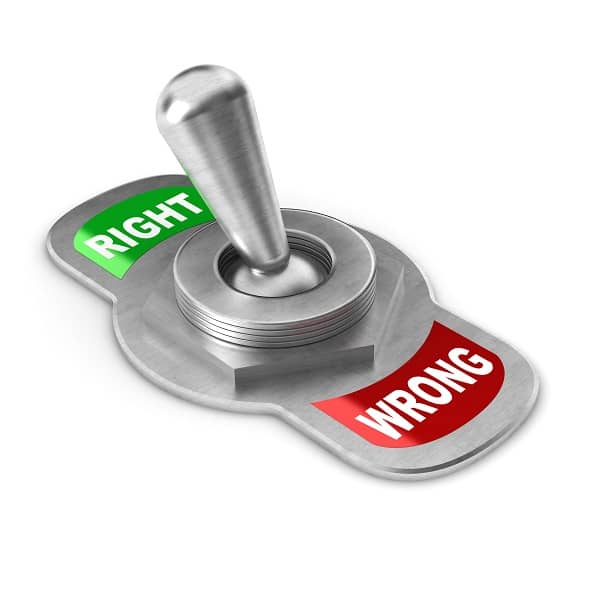Yep, a blog about integrity. Or the lack of it. Complex topic. Huge topic, too. With many victims, much damage, and many pitfalls. But also a lot of profit for those who get away with it or handle it well. We asked ourselves: can the profession of assessment psychology positively contribute to this subject? We think so.
Yep, a blog about integrity. Complex topic. With many victims, much damage, and many pitfalls. But also a lot of profit for those who get away with it. We asked ourselves: can psychology positively contribute to this subject? We think so.
The newspapers were abuzz with it: corporate espionage and stealing IP by criminals. They enter the workforce (permanent or flex) to enrich themselves with fraudulent activity. That is their agenda. To exclude this group, you can think about background checks and screening. Scientifically, links between microexpressions and lying have been demonstrated. AI and expert applications are also available in this area. But these solutions are still being determined. Even psychological assessment does not offer certainty here.
But it is not only the criminals who create integrity risks.
Even people like you and me can cause integrity damage under certain circumstances. Often, small harm (improper sick leave), but if widespread, they still result in a significant sum of damage. Remember extensive damages like the well-known diesel scandal, Tibor interest, money laundering, data scandals, etc. These were extensive activities involving several employees in an organized manner.
Integrity damage can be caused by anyone in any organization. But there is good news: there are solutions to reduce integrity damage. That’s what this blog is about.
Even people like you and me can cause integrity damage under certain circumstances. Often, small harm (improper sick leave), but if widespread, they still result in a significant sum of damage. Remember extensive damages like the well-known diesel scandal, Tibor interest, money laundering, data scandals, etc. These were extensive activities involving several employees in an organized manner.
Anyone in any organization can cause integrity damage. But there is good news: there are solutions to reduce integrity damage. That’s what this blog is about.
In the vernacular, integrity is often seen as a character trait. Incorruptibility used to be called that. This implies that integrity is more or less a given: it is something you have or not. However, that is too short-sighted. You can’t manage this from HR either.
From a compliance perspective, integrity is seen as risks that an organization runs from within through the behavior of its employees. You are talking about the internal behavioral standards and agreements an organization imposes on itself to reduce the risks – which we have often seen in recent years.
From the individual’s perspective, behaving with integrity always involves balancing interests. For example, a short-term vs. long-term consideration or a personal vs. organizational interest. Integrity or non-integrity behavior emerges when people experience dilemmas in this balancing of interests. Moreover, dilemmas may become wider over time, for example, as circumstances change or the individual changes.

Integrity can be approached from 2 perspectives:
From compliance, integrity is seen as a risk that an organization faces from within because of the behavior of its employees. Then, it is about the internal standards of behavior and agreements an organization imposes on itself to reduce the risks – which we have often seen in recent years.
From the individual’s perspective, behaving with integrity always involves balancing interests. For example, a short-term vs. long-term consideration or a personal vs. organizational interest. Integrity or non-integrity behavior emerges when people experience dilemmas in this balancing of interests. Moreover, dilemmas may become wider over time, such as circumstances or individual changes.

Integrity is a loaded topic. If you judge an employee as not having integrity, it significantly impacts motivation. That is why it is essential to keep the assessment as close to the situation as possible.
So not: “We find you lacking integrity,” but: “In this specific situation, you showed ……. behavior; however, what we would have liked to see according to our integrity compass is ……. behavior.
It’s not easy, but it’s doable. You need to refer back to concrete examples. When assessing, systematic observation and recording of behavior is a prerequisite. Suppose you don’t refer back to specific situations. In that case, you judge by character, and your employee will quickly perceive that as character assassination.

When assessing integrity, it is essential to keep the assessment as close to the situation as possible.
So not, “we don’t think you have integrity,” but, “in this particular situation, you showed ……. behavior; however, what we would have liked to see according to our integrity compass is ……. behavior.
So, you have to be able to refer back to concrete examples. When assessing, systematic observation and recording of behavior is a prerequisite. Otherwise, you judge by character, and your employee will quickly perceive that as character assassination.

Functioning can be predicted. That’s our business. But can you also predict integrity? In our profession, prediction is about risk assessment: the probability of specific behavior under certain circumstances. So the question is: what causes the risks of unethical behavior? I mention 5 risks and how to estimate them:





Yep. On the one hand, you can assess integer behavior (learning and correction moment). On the other hand, you can predict the risks of non-integrated behavior. Doing that structurally reduces the risks and the corresponding damage.
And it may sound boring, but as an organization, consistency is vital. The culture must stand! Not in pretty one-liners at the reception or in the annual report. But in do’s and don’ts. People don’t do what their bosses tell them to do. People do what their bosses do.
Or call: +31 88 – 277 377 6
To call directly: +31 88 277 377 6
Subscribe to new comments